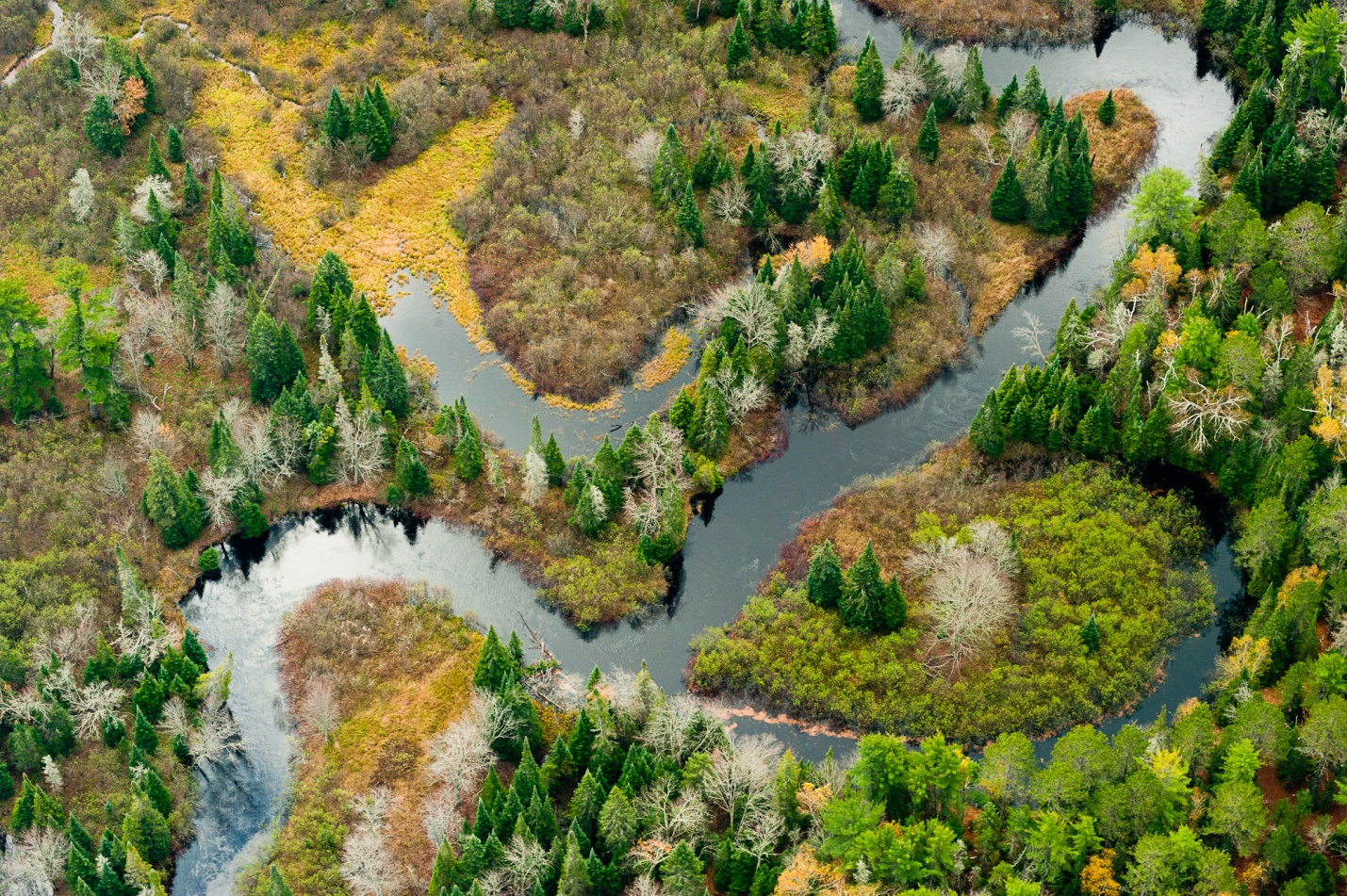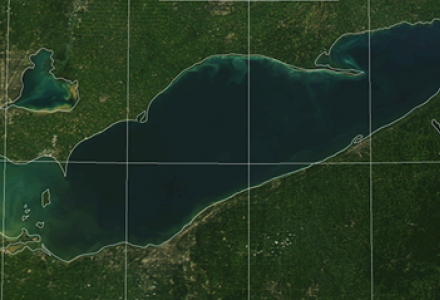
“He felt a reaction against deep wading with the water deepening up under his armpits, to hook big trout in places impossible to land them.” – Ernest Hemingway, “Big Two-Hearted River.”
It may be that Hemingway was really writing about the Upper Peninsula’s Fox River running through Seney, Michigan, but it almost doesn’t matter. A six-year effort has now been completed—using funds from the Great Lakes Restoration Initiative and other sources—to re-connect 35 miles of the Two Hearted River. As a result, this waterway is now one of the longest free-flowing rivers in the Great Lakes.
Though the Two Hearted is the only state-designated wilderness river in Michigan, that doesn’t mean the watershed hasn’t been beaten up, much of its bruising from sweeping white pine clear-cutting decades ago. More recently, stream crossings over culverts have collapsed, creating jams and resulting in sediment pouring into the waterway. The stream then fractured, with spawning beds smothered by silt.
 The Two Hearted River, which winds through Michigan. Credit: TNC Archives.
The Two Hearted River, which winds through Michigan. Credit: TNC Archives.
Welcome to the world of what restoration biologists call “connectivity,” the need for fish to spawn upstream unimpeded and unchoked. In this case, the victims have been the better-known native brook trout, round whitefish, northern pike and others hindered from their natural migration.
They are hindered no more. A public-private partnership, with leadership from The Nature Conservancy (TNC), Michigan Department of Natural Resources, Superior Watershed Partnership, Luce County, Trout Unlimited, corporate and private landowners, a couple of townships, and several sportsman’s clubs and small businesses, came together to restore the Two Hearted’s pulse.
“The Two Hearted is no longer broken,” proclaims Dr. Patrick Doran, conservation director at TNC’s Michigan office. “Rarely do we get the opportunity to re-connect an entire watershed. Thanks in large part to the Great Lakes Restoration Initiative and our many other public and private partners, the river is now free-flowing without barriers.”
 Another view of the river. Credit: TNC Archives.
Another view of the river. Credit: TNC Archives.
With the $990,000 project’s completion, 100 percent of the impediments—27 road crossings and sedimentation sources—have been removed or re-engineered to result in a naturally-flowing stream. Once the full effect of the restoration takes hold, an estimated 626 tons per year of sediment that suppresses fish spawning will be prevented – the equivalent of 22 dump trucks of dirt, according to Doran.
The team replaced corrugated metal culverts, which were prone to collapse and allowed more sediment to wash into the river, with precast concrete culverts. In another case, instead of rebuilding a culvert, the team used a movable bridge. And by moving the bridge to different locations when needed, it reduced impact even more. Why have three permanent bridges to collect sediment when only one will do the trick? The team found the work could mean 98 percent less sedimentation than traditional culverts.
Today the vibrant partnership, innovative approaches to solving real ecological problems and dedicated funding make the river a great restoration case study. That it also marks the recovery of this nationally and culturally significant river would have made Hemingway, or his protagonist, Nick Adams, happy.

Cameron Davis Senior Advisor to the Administrator US Environmental Protection Agency



